
Top 10 things to eat and drink in Scotland
If you're travelling to Scotland, you'll no doubt want to sample the local cuisine, but where to start? The country is home to a magnitude of comforting traditional dishes as well as innovative modern inventions. Historically in Scotland, food and drink was based around staples such as seafood, cereals and vegetables, as well as meats like rabbit and venison. Dishes were made from affordable locally produced fare, resulting in hearty stews, soups and porridges that were perfect for the blustery weather, and can still be found in homes and on menus today.
One of the oldest, and undoubtedly most well-known Scottish creations is haggis, which dates all the way back to the 14th century. Made from a mix of offal, onions, oatmeal, suet, and seasonings boiled in a sheep's stomach, it remains incredibly popular - there are even vegan versions on offer. However, it’s not the only dish Scotland is known for. From fresh squat lobsters on the Isle of Skye and delicious cheeses like Orkney Cheddar and Lanark Blue, to Scotch pies and the beloved Stornoway black pudding (the best is said to come from Charles Macleod), there's plenty of tasty fare to fuel your sightseeing. One thing you won't find on traditional menus is a scotch egg - despite the name, these were actually created in London by Fortnum & Mason in 1738.
If you fancy something a little less traditional but uniquely Scottish, head to a local fish and chip shop. Alongside the more familiar options, you'll find novel creations like the deep-fried pizza (known locally as 'pizza crunch'), a fritter roll, which consists of battered and deep-fried mash potato in a bread roll, and maybe even that world-famous 90s leftover, the deep-fried Mars bar. Without further ado, here is our pick of the top 10 Scottish foods to try on your next visit.
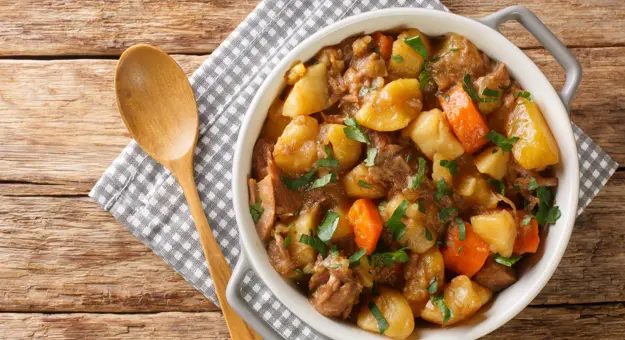
Stovies
While you're unlikely to find this Scottish delicacy in a Michelin starred restaurant, it's worth seeking out due to its rich history. The basic ingredients include potatoes, meat (although there are vegetarian alternatives available), vegetables and gravy. Sound familiar? That's probably because the much-loved dish is believed to have originated in the 19th century when servants would be given the leftovers from the lavish Sunday dinner. As a result, the ingredients and preparation method vary a lot from family to family.
Stovies remains a firm favourite in Scotland today, although, given that it is primarily enjoyed at home, it can be tricky to find it on menus. You are most likely to find it in small cafes and traditional pubs - the types of places that serve unpretentious comfort food.
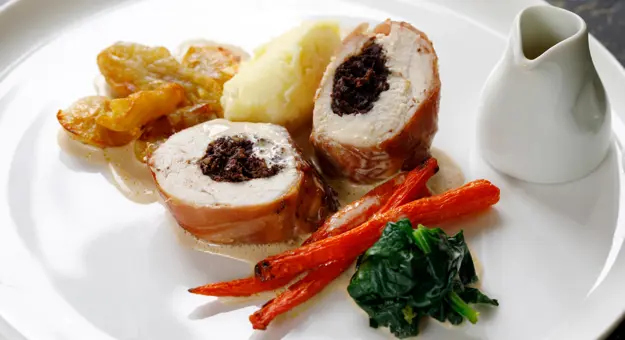
Balmoral chicken
While you've probably tried haggis, neeps and tatties if you've already been to Scotland, there is another traditional dish that uses the famous offal pudding in a different way. Balmoral chicken (also known as Highland chicken) consists of chicken breast stuffed with haggis and wrapped in bacon. It is typically served with mashed potatoes and vegetables and covered in a whisky cream or peppercorn sauce.
The dish's origins are a little mysterious - not much is known about how it came to be. However, chances are that it was named after the Royal Family's Scottish residence, Balmoral Castle - perhaps because it was once served at the grand estate. Nowadays, the dish is enjoyed at restaurants and pubs with more traditional Scottish food, and it is also sometimes served as the main course on Burns Night, when the life of beloved Scottish poet Robert Burns is celebrated with a hearty feast.
Suggested tour
- Enjoy a tour of the enchanting Isle of Skye
- Venture to the Isle of Lewis and visit a traditional Black House and the Broch of Carloway
- Travel around the Isle of Harris
- Flights included
7 days from £1,701 pp
was £1,889 pp
Dates Available
May 2026 - August 2026
Duration
7 days
Depart From
5 airports
Excursions & Visits
10 included
Meals
12 included
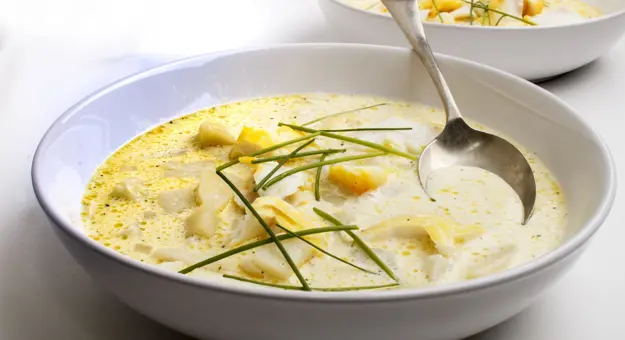
Cullen skink
Cullen skink is a thick soup made from smoked haddock, potatoes and onions. The recipe changes slightly from town to town, with variations such as the addition of milk or cream. While the more traditional options call for the finnan haddie - cold-smoked haddock - a popular replacement is Arbroath smokies, which come from the town of Arbroath in Angus. This hardwood-smoked haddock has protected status and can only be called as such if smoked in the traditional way within five miles of the town.
The dish originates from the town of Cullen in Moray on Scotland's northeast coast. The unusual name is believed to have come from the Gaelic word for essence. Historically, Cullen Skink was made with beef scrapings, but thanks to an economic downturn in the late 19th century, the meat became too costly for local people. Instead, they turned to the thriving Cullen Harbour, where haddock was in plentiful supply.
Still a much-loved Scottish delicacy, celebrity chefs like Rick Stein have adapted the traditional recipe, and there is even a Cullen Skink World Championship held every year. Naturally, the best place to try the dish is in the town of Cullen itself, with eateries like Lily’s Kitchen Cafe and Rockpool Cafe and Restaurant being known for their superior recipes.
Suggested tour
- Enjoy a reserved seat to observe the spectacular Royal Edinburgh Military Tattoo
- Set off on a short orientation tour of Edinburgh followed by free time to wander around at your leisure
- Join an optional boat trip across Loch Lomond and a tour of the beautiful Trossachs National Park
- Flights included
4 days from £788 pp
was £829 pp
Dates Available
August 2026
Duration
4 days
Depart From
7 airports
Excursions & Visits
3 included
Meals
3 included
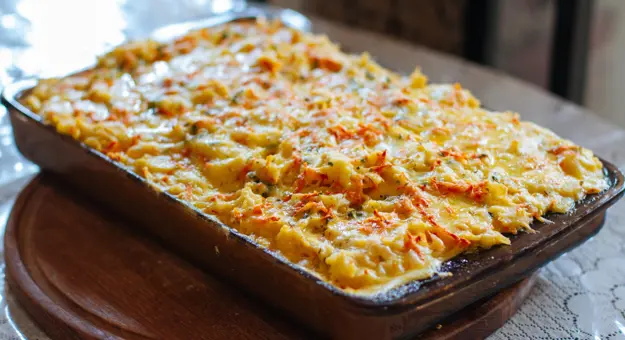
Macaroni pie
Now for a Scottish snack you may not have heard of - the macaroni pie. Not to be confused with the Caribbean version, this dish is exactly what it sounds like - macaroni cheese encased in hot water crust pastry. Not exactly fine dining, but undeniably delicious and the perfect comfort food to keep you full while exploring Scotland by rail or walking in the Highlands.
Very little is known about how this tasty creation came to be. The first known macaroni cheese recipe in Britain dates back to 1769, so perhaps it wasn't too long after that some ingenious soul gave it a pastry shell. Whatever its origins, it's fair to say that the macaroni pie has become a favourite snack in Scotland. When bakery chain Greggs stopped selling it in 2015, a countrywide campaign was launched to try and reverse the decision - even Nicola Sturgeon got involved! Unfortunately, the petitioning was unsuccessful. But fear not, you can still find the pastry snack in bakeries like the Piemaker in Edinburgh and Harry Gow, which has many locations across east Scotland. You can even buy it from the comfort of your sofa, with online butchers like Scott Brothers delivering throughout the UK.
Suggested tour
- Spot wildlife on a cruise on the Moray Firth
- Go mythical monster hunting on a boat trip on Loch Ness
- Marvel at the dramatic, 13th-century Dunrobin Castle and wander around its Versailles-inspired gardens.
- Flights included
7 days from £1,118 pp
was £1,315 pp
Dates Available
March 2026 - October 2026
Duration
7 days
Depart From
4 airports
Excursions & Visits
9 included
Meals
8 included
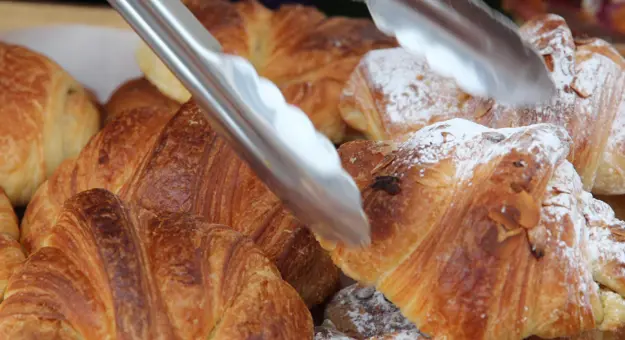
Buttery
Hailing from the north-eastern city of Aberdeen, these flattened rolls, also known as rowies or Aberdeen rolls, have a flaky texture that is not dissimilar to that of a croissant. As the name suggests, they have a delicious buttery taste, making them perfect to enjoy toasted and slathered in butter and jam. They are eaten at breakfast (alongside a cup of tea, of course), or as a tasty snack.
Butteries are said to have been created for Aberdeen's fishermen, who needed a bread that wouldn't become stale too quickly and would provide them with a much-needed energy boost. This popular Scottish food is still a staple in many homes today, and there are even contests such as the World Buttery Championship to celebrate the very best on offer. Whether you are seeing the sights of Aberdeen or venturing to the Cairngorms, you must try this savoury snack in Aberdeenshire. You can sometimes find butteries in Scottish supermarkets, but for fresh, better-quality products you should head to a local bakery.
Suggested tour
- Rail travel from Inverness to Kyle of Lochalsh - a truly spectacular ride through the remote northern Highlands and alongside Loch Carron
- Cross the Glenfinnan Viaduct, as seen in the Harry Potter films, on a train ride from Fort William to Mallaig
- Journey on the steam-hauled Strathspey Railway through unspoilt Highland scenery and alongside the River Spey
- Flights included
5 days from £797 pp
was £885 pp
Dates Available
April 2026 - October 2026
Duration
5 days
Depart From
9 airports
Excursions & Visits
12 included
Meals
8 included
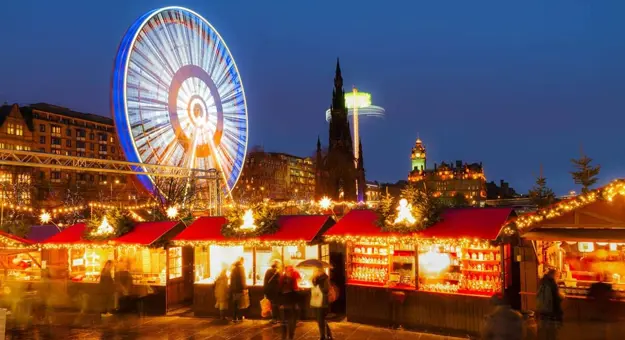
Lorne sausage
If you've had your fill of Scottish porridge in the mornings and want to try a different but equally filling breakfast, look to the Lorne sausage. Hailing from Lorne, Argyll, it is made from a mixture of ground beef, rusk, and seasoning such as pepper and nutmeg. Also known as a square sausage or square slice, the Lorne sausage is actually not quite a sausage, as instead of being packed into casing, it is shaped into a block. The sausage - more of a patty, really - is then cut into squares and fried. It is most often eaten in a roll for breakfast or as part of a full Scottish breakfast.
As with many Scottish dishes, the origins of the Lorne sausage are unclear, although it was mentioned in newspapers as early as 1896, and a 1917 report mentions it in relation to the diet of the military's soldiers. Nowadays, you shouldn't have too much trouble tracking down this delicacy.
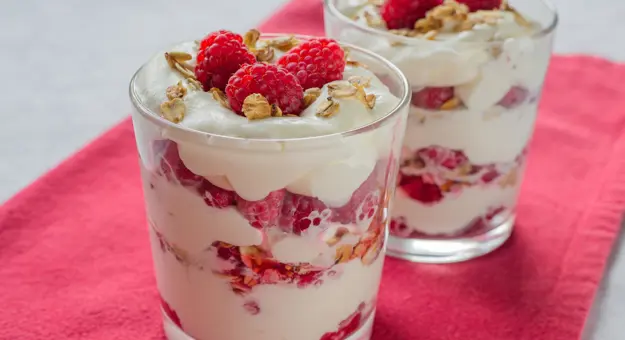
Cranachan
Those with a sweet tooth will have plenty to keep their appetite sated. From shortbread to clootie dumpling (a spiced pudding), the country is brimming with tasty after-dinner treats. However, the ultimate Scottish dessert has to be Cranachan. While it may be simple - just cream, raspberries, oats and whisky - it is undeniably delicious.
This popular dessert was born out of a celebration of the harvest in June, and, with the addition of crowdie cheese, was actually more likely to be eaten for breakfast. Its name comes from the Gaelic word for churn. Now enjoyed all year round, with the different ingredients often being brought to the table individually to allow diners to mix them to their taste.
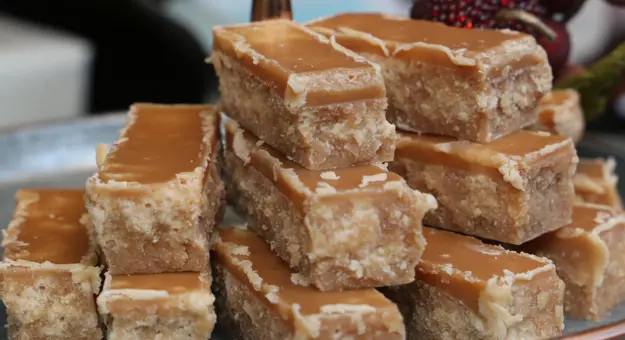
Tablet
If you’re looking for something on the sweeter side of Scotland’s food and drink, tablet is the perfect treat. This mouthwatering confectionary is made using just sugar, butter, and condensed milk, which is boiled until it crystallises and flavoured in various different ways. While it is similar in appearance to fudge, it differs in texture. Tablet is harder and more brittle than fudge, and should generally melt in the mouth.
Tablet dates all the way back to the early 18th century, when it was first mentioned in a household guide by Lady Grisell Baillie, although back then it was made with cream. Nowadays, you'll often see it at weddings or other special events, as well as in sweet shops throughout Scotland. You can also buy it online from companies such as the Scottish Tablet Company, which produces the sweet in Campbeltown, Argyll.
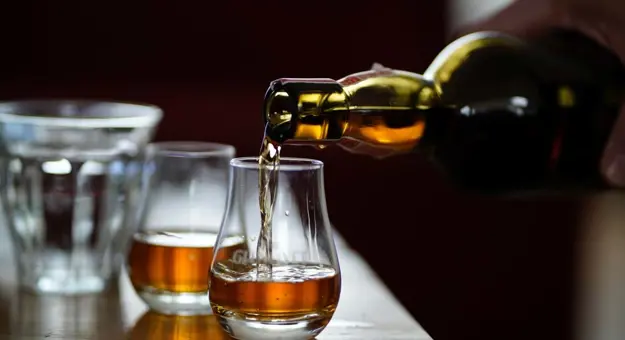
Whisky
Whisky has been produced here for centuries. While its exact history is unclear, there are two theories for the origins of its distillation. First, and the generally more accepted hypothesis is that incoming monks brought the process with them from mainland Europe in the fourth and fifth centuries. The second is that farmers in the Highlands discovered the process themselves when using up their surplus grains. However it got to Scotland, it's fair to say that the drink has since become synonymous with the country.
Scotch whisky is protected, meaning it can only be given that title if it is made in Scotland in a particular way. There are five specific whisky-producing regions in Scotland, namely Highland, Campbeltown, Speyside, Lowland and Islay, with around 150 distilleries across these regions that offer tours and tastings. Though each region produces its own unique flavours, there are technically just five different types; single malt, blended malt, single grain, blended grain and blended Scotch whisky.
Among our favourites are Torabhaig Distillery on the Isle of Skye, Ben Nevis Distillery in Fort William and Glen Ord Distillery on the Black Isle.
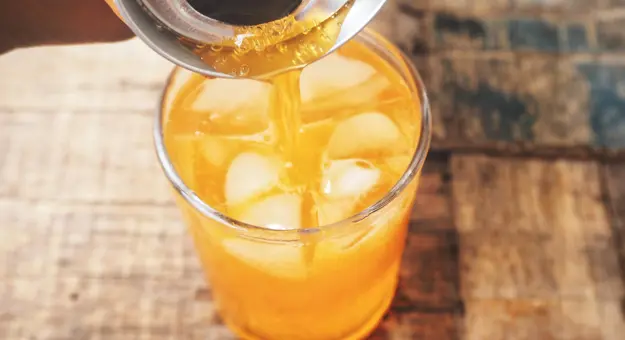
Irn-Bru
Known as Scotland's 'other national drink', Irn-Bru is a fizzy drink made with a historical secret recipe. While it's available throughout the UK, you can't come to Scotland and not enjoy at least one bottle of its most famous soft drink export. The bright orange has something of an interesting history. It was launched in 1901, when drinks producer AG Barr decided to create a soft drink to target the steel workers constructing Glasgow Central Station as a way to reduce the consumption of their preferred beverage - beer. The new soft drink proved a hit - it gave the workers an energy boost and quenched their thirst, and it wasn't long before the public took to it, too. Back then, it was named 'Iron Brew' - the name was changed in 1948 after new government legislation introduced stricter rules regarding the labelling of products claiming to contain minerals, including iron.
Of course, you won't have any problem finding a glass of the carbonated drink anywhere in Scotland. For something a bit more unique, there are several bars that offer Irn-Bru cocktails, including the Paramount bar in Aberdeen.
We hope this guide has given you some inspiration for places and attractions to add to your Scotland wish list. Whatever time of the year you visit, and whether you're setting off with friends, family, or venturing solo, the country is sure to provide you with unforgettable experiences you'll treasure forever. Be it long walks in the countryside or exploring rich cultural and historical offerings, there really is something to suit all tastes here.
Still not sure what to do in Scotland? Why not take a look at our pick of the country's top places to visit.
Discover our blog
All aboard for adventure: Five of the best rail journeys around the world
From heritage railways across Europe to luxury sleeper-train journeys throughout Northern India, these are some of the best train holidays in the world.
Inside our itineraries: Getting into the Christmas spirit with our tour manager, Alistair
Look ahead to the most wonderful time of the year with a deep dive into one of our enchanting festive breaks courtesy of our tour manager, Alistair.
Inside our itineraries: Exploring the Edinburgh Tattoo with our expert tour manager
Get a glimpse behind the scenes of one of the British events calendar’s most exciting occasions as we talk all things Tattoo with our tour manager, Gordon.






